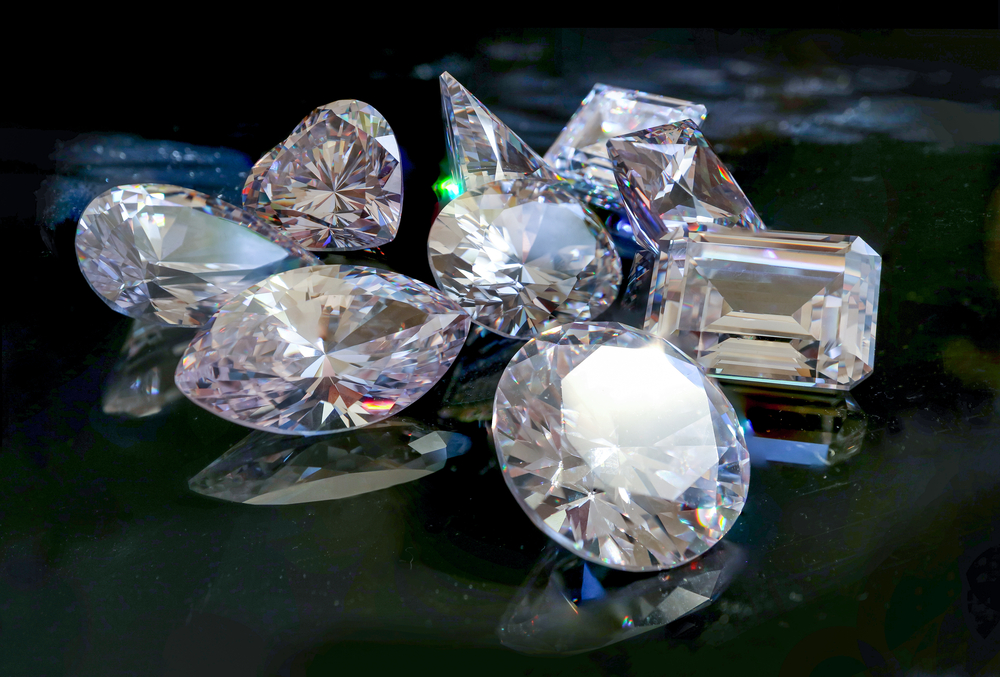
Diamonds are not only prized for their rarity and beauty, but also for the meticulous craftsmanship that goes into cutting them. When shopping for a diamond, the cut grade is one of the most important factors to consider, as it significantly impacts the diamond’s overall appearance and brilliance.
But what exactly is Diamond cut grades, and how does it affect the grade? Let’s dive into the details.
What Is Diamond Cut?
The “cut” of a diamond refers to how well the diamond has been shaped and faceted from its raw form. Unlike the diamond’s carat weight or color, which are inherent qualities, the cut is determined by a jeweler and directly affects the way the diamond interacts with light.
A well-cut diamond will reflect light in a way that maximizes its brilliance and sparkle, while a poorly cut diamond can appear dull, regardless of its size or color.
Diamond Cut Grading Scale
The cut grade is measured on a scale from Excellent to Poor. The Gemological Institute of America (GIA), one of the most respected names in gemology, grades diamonds based on several factors, including proportions, symmetry, and polish. Here’s a breakdown of the common cut grades:
- Excellent
- A diamond with an “Excellent” cut grade is cut to nearly perfect proportions, allowing it to reflect and refract light in an optimal way. These diamonds appear the most brilliant and sparkling.
- The angles, symmetry, and polish are all superb, resulting in maximum light return.
- Very Good
- “Very Good” diamonds have excellent proportions but may have slight differences in symmetry or polish. These diamonds still perform brilliantly, offering great sparkle, though not as perfect as the Excellent grade.
- Good
- Diamonds graded “Good” may have noticeable deviations in proportion or symmetry. While they still reflect light well, they don’t achieve the same level of brilliance as higher-graded diamonds. They represent a good balance between quality and price.
- Fair
- Diamonds with a “Fair” cut grade may have noticeable flaws in symmetry, polish, or proportions. While they are still diamonds, their light performance will be significantly reduced, leading to less sparkle and brilliance.
- Poor
- Diamonds graded as “Poor” have significant issues with symmetry, proportions, or polish that severely affect their light performance. These diamonds can appear dull and lackluster.
How Cut Affects the Diamond’s Appearance
The cut affects how a diamond interacts with light, which is the primary factor in its brilliance. A diamond with an excellent cut will have more “fire” (flashes of color), sparkle, and brilliance than one with a poor cut.
There are several aspects of the cut that influence the diamond’s grade:
- Proportions: The angles and dimensions of the diamond’s facets. The right proportions allow light to enter and exit the diamond in a way that maximizes its brilliance.
- Symmetry: This refers to the alignment of the facets. Even minor asymmetry can impact the diamond’s sparkle, although it may not be visible to the naked eye.
- Polish: The smoothness of the diamond’s surface. A well-polished diamond has fewer blemishes and reflects light more effectively.
Why Is Cut So Important?
While color, clarity, and carat weight (the 4 Cs) are crucial in determining a diamond’s value, cut is arguably the most important in determining its beauty. Even a diamond with perfect color and clarity can look lackluster if its cut is poor.
A diamond’s cut quality can affect its perceived size as well. Well-cut diamonds tend to look larger and more brilliant than those with poor cuts, man made diamonds, even if they have the same carat weight.
How to Choose a Diamond Based on Cut Grade
When choosing a diamond, it’s essential to consider both your budget and your personal preferences.
- If brilliance and sparkle are most important to you, it’s worth investing in a diamond with an Excellent or Very Good cut grade.
- If you’re looking for a more budget-friendly option, you can still find diamonds with Good or Fair cut grades that offer a pleasing appearance at a lower cost.
Conclusion
Diamond cut is not only a reflection of craftsmanship, but it plays a pivotal role in how the diamond looks. Whether you choose an Excellent or Good cut, the quality of the cut will have a significant impact on the diamond’s brilliance and overall aesthetic appeal. When buying a diamond, don’t overlook the importance of cut; it’s the key to unlocking a diamond’s full beauty.






